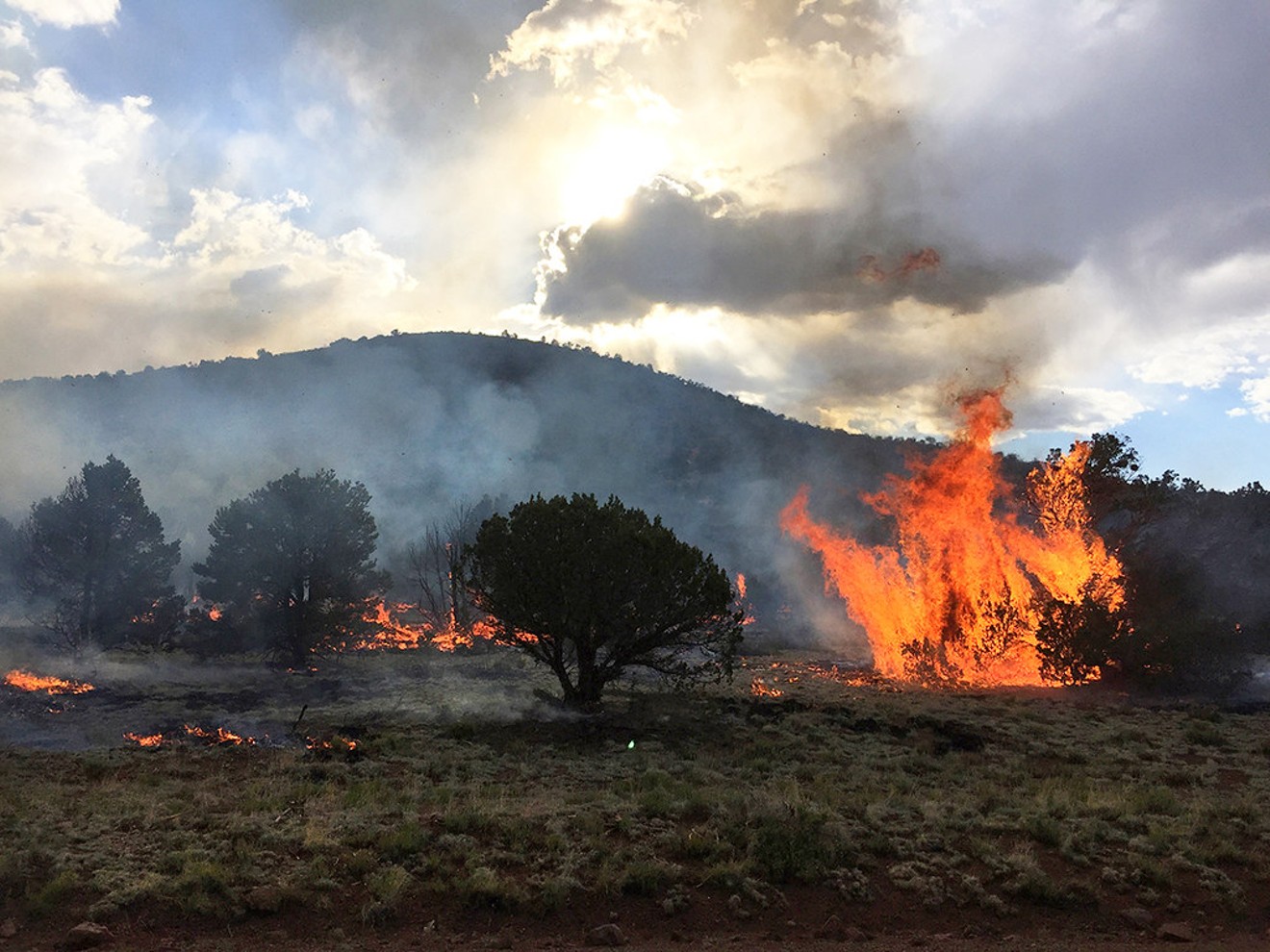Those sites include the Iron King Mine-Humboldt Smelter near Prescott; the Motorola plant on 52nd Street in Phoenix; the Phoenix-Goodyear Airport area; and the Hassayampa Landfill in Buckeye.
Two delisted sites — Mountain View Mobile Home Estates in Globe, and Phoenix's 19th Avenue Landfill — were also named in the 71-page report, which was compiled by the U.S. Government Accountability Office and released on November 18.
"Climate change may result in more frequent or intense extreme events, such as flooding, storm surge, and wildfires, among other effects, which could damage remedies ... and lead to releases of contaminants that could pose risks to human health and the environment," explained the report from the GAO, the federal government's top audit agency.
The GAO analyzed data from federal agencies at the request of Congress to assess the potential impacts of climate change on roughly 1,500 Superfund sites across the U.S.
It found that about 60 percent of those sites were in areas that could be affected by flooding and wildfires, which are becoming more intense with climate change and which could spread contaminated soils or sediments.
The Superfund program covers sites contaminated with toxic substances that are slated for or currently undergoing cleanup. It is administered by the federal Environmental Protection Agency and was created by the Comprehensive Environmental Response, Compensation, and Liability Act of 1980.

Six Superfund sites in Arizona are at risk of being affected by the natural disasters made worse by climate change.
In Arizona, the GAO's analysis showed, the Iron King Mine-Humboldt Smelter is in an area with "high wildfire hazard potential." The former mine covers about 153 acres and the former smelter about 182 acres, all in Yavapai County. Their soil, sediments, air, and water "may have" been contaminated with arsenic, lead, and other metals from leftover waste like tailings and slag, according to the Arizona Department of Environmental Quality (ADEQ).
Three sites — Motorola 52nd Street (contaminated groundwater, possibly vapors), the Phoenix-Goodyear Airport Area (toxic groundwater plumes, heavy metal in some soils), and Hassayampa Landfill (contaminated groundwater) — were in areas that could be affected by moderate flooding.
The 19th Avenue Landfill, where groundwater was found to be contaminated with heavy metals, pesticides, and other toxins and which was delisted in 2006, was in an area that could be highly affected by floods and wildfires, the GAO found.
Similarly, Mountain View Mobile Home Estates faced a dual risk, with a high potential for hazards from wildfires and a moderate risk of flooding. That area, home to 17 mobile homes, was the site of a former asbestos mill. Carcinogenic asbestos fibers contaminated its soil and air, and eventually, it was decided that "permanent relocation [was] the only way to effectively mitigate the human threat." It was pulled from the Superfund list in 1988.
The GAO did not identify risks at three Superfund sites in Arizona: Indian Bend Wash Area in Scottsdale; the Tucson International Airport Area; and Apache Powder Co. in Saint David.
In its report, the audit agency named several research limitations that could mean its findings actually underestimate the threat that climate change poses to these sites or "not fully account for the number of [Superfund] sites that may be in such areas."
The federal data the agency used were based on current or past conditions, it said, which climate change "may exacerbate" in the future. (Such language is tentative in comparison with other explanations that have definitively linked climate change with the heightened effects of wildfires, such as an increase in acreage burned.)
Ultimately, the GAO recommends four actions that EPA should take in order to manage the risks of the potential impacts of climate change at these toxic sites. Without taking some of those steps, the GAO warned, "EPA cannot ensure that senior officials will take an active role in strategic planning and accountability for managing these risks.
"EPA agreed with one recommendation and disagreed with the other three. GAO continues to believe that all four are warranted," the report continued.
Erin Jordan, a spokesperson for the ADEQ, said the department would need to review the report and consult with EPA before commenting.











